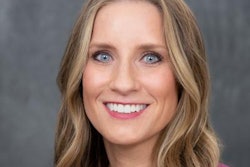Most practices hired radiologists in 2021, and in 2022, breast imaging was the most important hiring need followed by body imaging, according to a recent survey by the American College of Radiology (ACR).
The ACR’s human resources (HR) commission fielded its latest annual workforce survey in October 2021 (after skipping 2020 due to the COVID-19 pandemic). Participants reported on their practice types, specific subspecialty needs, and employment and retirement trends: recruiting remains robust, the group found.
“Such information could inform predictions about future shortages and oversupplies of radiologists and thus help optimize future patient care,” wrote first author Elizabeth H. Dibble, MD, of Brown University in Providence, RI, and colleagues. The article was published October 10 in the Journal of the American College of Radiology.
A shortage of between 37,800 and 124,00 physicians is expected by 2034 as the U.S. population ages, according to the authors. Thus, given the increasing need for medical care supported by radiology services, ongoing workforce information is necessary to optimize patient access to imaging, they noted.
To that end, the HR commission conducted a workforce survey of ACR members, non-members, and radiology business management association (RBMA) members about a variety of current and recent radiology practice characteristics.
Of 1,702 survey respondents, 64% were men with a median age of 51 years. In 2021, a majority of responding practices hired radiologists, with the average practice hiring two radiologists, and academic practices on average hiring the most.
In addition, most radiologists (87%) were hired for full-time positions, with independent practices hiring the largest proportion of part-time positions, according to the results.
Salient results include the following, the group wrote:
- Most practices (62%) hired radiologists in 2021, and most had similar hiring plans for 2022.
- Body and breast imagers represented the largest number of hired radiologists (17% each) in 2021, with these also identified as the most important needs for 2022.
- Private practices comprise half of radiology practices and academic practices comprise the majority of very large practices.
- A large majority of practices (82%) allow some form of telework, and a large majority of radiologists currently telework or would like to do telework in the future.
- 16% of radiologists plan to seek new employment in the next year, with early-career radiologists indicating the highest likelihood (92%) of remaining in the same practice for at least five years.
- The average age of retirement for radiologists is 75 years and most radiologists (66%) worked full-time until retirement.
The group highlighted the finding that the majority of radiologists plan to stay in their current positions for the next five years. This finding was in contrast to a previous study showing that between 2014 to 2018, there was job separation by approximately 40% of radiologists.
“In the context of the current wide-open job market, radiology practice leaders can look at this data with some optimism in a challenging time of recruitment,” the group concluded.
The full report is available here.



















